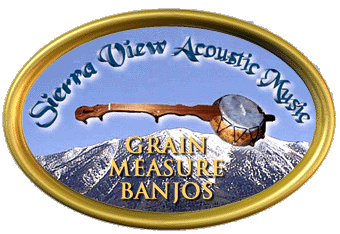So I need to get a minstrel banjo and wanted to solicit suggestions on which banjos.
There are the Bob Thornburg Grain Measure Banjos...
Minstrel Boy Banjos...
And of course the Fleshers...
I am interested in comments about the historical accuracy of these makers....as well as other comments about quality. A tack head calf-skin banjo (such as the Thronburg Grain Measure) has me a little worried about tension issues and maintenance over time...so I am tending to lean towards an adjustable calf-skin head such as on the Fleshers and Minstrel Boy banjos. The price is right on the Minstrel Boy banjos.
What do other minstrel banjo players use? Is my maintenace concern on a tackhead valid?
Thanks,
Michael Foley
There are the Bob Thornburg Grain Measure Banjos...
Minstrel Boy Banjos...
And of course the Fleshers...
I am interested in comments about the historical accuracy of these makers....as well as other comments about quality. A tack head calf-skin banjo (such as the Thronburg Grain Measure) has me a little worried about tension issues and maintenance over time...so I am tending to lean towards an adjustable calf-skin head such as on the Fleshers and Minstrel Boy banjos. The price is right on the Minstrel Boy banjos.
What do other minstrel banjo players use? Is my maintenace concern on a tackhead valid?
Thanks,
Michael Foley




Comment